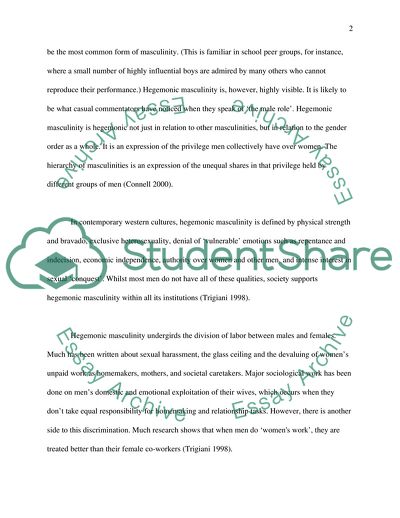Cite this document
(Hegemonic Masculinity Concept Article Example | Topics and Well Written Essays - 2500 words, n.d.)
Hegemonic Masculinity Concept Article Example | Topics and Well Written Essays - 2500 words. https://studentshare.org/sociology/1703026-what-do-you-understand-by-hegemonic-masculinity-does-this-concept-help-us-understand-the-relationship-between-power-and-crime
Hegemonic Masculinity Concept Article Example | Topics and Well Written Essays - 2500 words. https://studentshare.org/sociology/1703026-what-do-you-understand-by-hegemonic-masculinity-does-this-concept-help-us-understand-the-relationship-between-power-and-crime
(Hegemonic Masculinity Concept Article Example | Topics and Well Written Essays - 2500 Words)
Hegemonic Masculinity Concept Article Example | Topics and Well Written Essays - 2500 Words. https://studentshare.org/sociology/1703026-what-do-you-understand-by-hegemonic-masculinity-does-this-concept-help-us-understand-the-relationship-between-power-and-crime.
Hegemonic Masculinity Concept Article Example | Topics and Well Written Essays - 2500 Words. https://studentshare.org/sociology/1703026-what-do-you-understand-by-hegemonic-masculinity-does-this-concept-help-us-understand-the-relationship-between-power-and-crime.
“Hegemonic Masculinity Concept Article Example | Topics and Well Written Essays - 2500 Words”. https://studentshare.org/sociology/1703026-what-do-you-understand-by-hegemonic-masculinity-does-this-concept-help-us-understand-the-relationship-between-power-and-crime.


